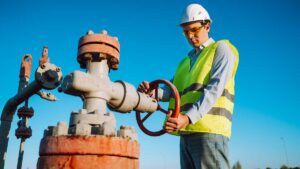Po Valley rattles the tin to fund Italian gas field development

Po Valley is raising up to $10.1m to develop its Selva Malvezzi gas project. Pic: Getty Images
Po Valley Energy (ASX:PVE) is looking to raise up to $10.1m to fund development of its Selva Malvezzi onshore gas project in Italy that represents a low capex opportunity to generate strong earnings.
The company is looking to raise the funds through a placement of 35.7 million shares priced at 2.8c per share to raise about $1m and a fully-underwritten 1 for 2 pro-rata accelerated non-renounceable entitlement offer at the same price to raise the remaining $9.1m.
The entitlement offer comprises a $7.1m institutional component and a $2m offer to retail shareholders.
Selva Malvezzi has proved and probable reserves of 44.9 billion cubic feet of gas net to Po Valley.
Development costs are expected to be about €2.3 million ($3.6m) of which the company is responsible for €1.5m from its 63% stake in the project.
The project is expected to deliver earnings before interest, taxes, depreciation, and amortisation of €4.7m net to Po Valley per annum.
Well testing back in 2018 had already demonstrated good gas flow rates from the C1 and C2 sands.
Meanwhile, Byron Energy (ASX:BYE) has stepped away from a deal to refinance the company, saying that it was unable to reach a favourable hedging strategy with the potential lender.
The company said it was reluctant to hedge nearly 100% of its existing forecasted oil production at an average price of less than US$57 ($75.5) per barrel compared to the current West Texas Intermediate crude price of US$70.75/bbl.
As a result, it has elected to maintain its existing loan with Crescent Midstream. Its chief executive Maynard Smith reckons no deal is better than an inappropriate deal.
Byron currently has net oil and gas sales of 1,236 barrels of oil and about 9.5 million cubic feet of gas per day.
The company is poised to drill the SM69 E2 well in August and pending successful results from this well, will finalise the SM58 G3 and G4 wells.
Gas and helium
Meanwhile, Renergen (ASX:RLT) has intersected the target gas-bearing fracture system close to prognosis at its R2D2 well.
Gas samples will be collected and sent to the laboratory for analysis before the company runs electric (wireline) logs to ascertain the orientation of the faults and allow the team to plan on how to finish the well and maximise contact with the fracture.
The company had previously noted that gaseous odours were detected in the deeper section of R2D2, consistent with results from the successful MDR1 well.
UNLOCK INSIGHTS
Discover the untold stories of emerging ASX stocks.
Daily news and expert analysis, it's free to subscribe.
By proceeding, you confirm you understand that we handle personal information in accordance with our Privacy Policy.








